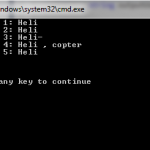When I created my first Asp.net web application with UpdatePanel, I wanted to use jQuery for some features. I wanted to make a button "transform", and when you click it, the text in UpdatePanel became modified via Javascript. I used jQuery framework also here. Soon I found out that it's not the simple task. (read more...)





